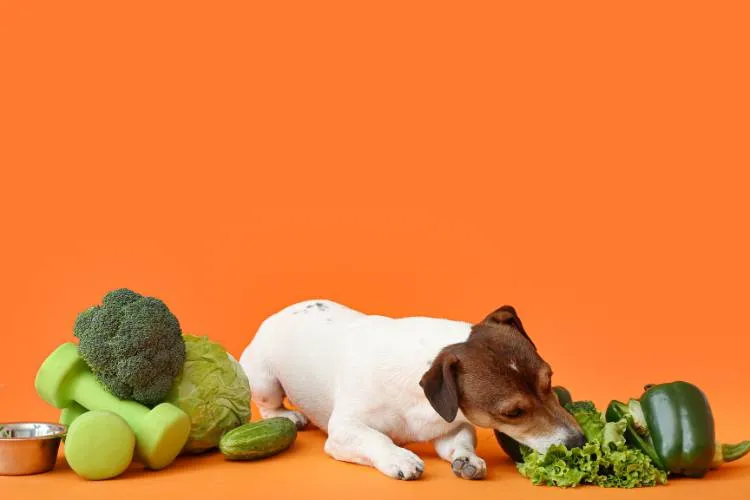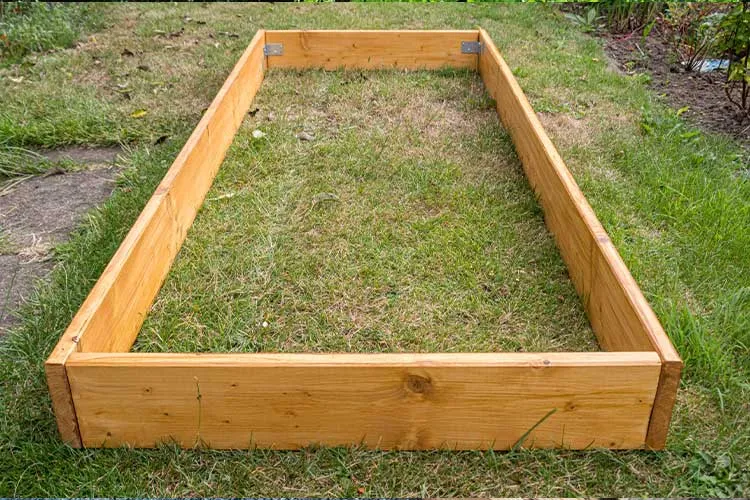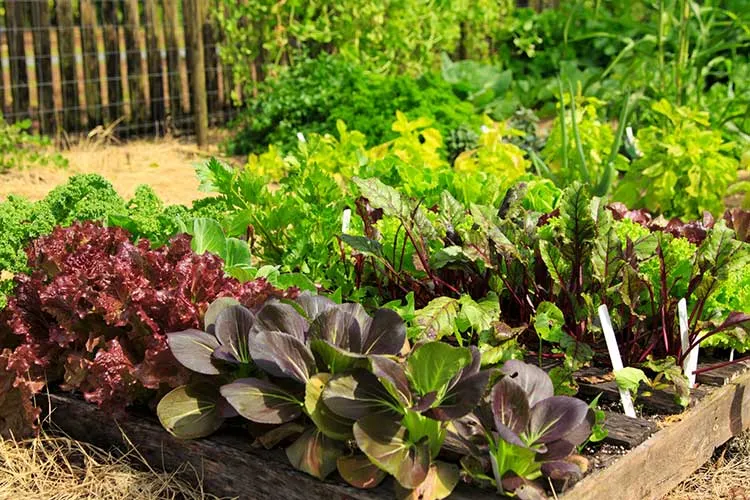Tired of finding bite marks in your pothos or dirt scattered across the floor? You’re not alone—plant-chewing is one of the top behavior complaints among dog owners. Chewing greenery isn’t just annoying—it can be dangerous, with many common houseplants toxic to pets. If you’re constantly redirecting or scolding, it’s time for a better approach.
This guide on how to Stop Your Dog from Eating Your Plants gives you 17 simple, proven tips you can start using today—no harsh punishment, no expensive tools. Whether you’re dealing with a curious puppy or a bored adult dog, there’s a fix that works.
1. Switch to Pet-Safe Plants That Won’t Tempt Them
Some plants practically invite dogs to eat. Whether it’s the texture, scent, or taste, certain greenery triggers chewing almost instantly. Swapping out your most tempting plants is a simple and low-stress place to start.
Keep reading…
Look for houseplants like spider plants, areca palms, or parlor palms—these are safe for pets and don’t appeal to canine taste buds. If you’re unsure which plants are dog-safe, use a trusted pet-safe list before bringing anything new home.
Also, pay attention to where you place them. Plants with leafy textures or strong smells should be kept higher up or in harder-to-reach spots to reduce temptation. Just like child-proofing, a little thoughtful placement goes a long way in preventing mishaps.
2. Spray Plants with a Bitter (But Safe) Deterrent
Even the most curious pup will think twice if a plant tastes awful. Pet-safe deterrent sprays are an easy way to make your plants unappealing without hurting your dog—or your greenery. Products like Grannick’s Bitter Apple or homemade mixes using water with white vinegar or lemon juice work well.
What’s the bottom line?
Always test spray one leaf to ensure it won’t damage the plant. Once safe, lightly mist the leaves and stems, focusing on the spots your dog targets most. Reapply once a week, especially after watering or rain. This method helps create a strong negative association without scolding, and many dogs lose interest after just a few attempts.
3. Give Your Dog Their Own “Plant” or Chew Area
If your dog keeps going for your plants, they might need a more exciting alternative. Set up a chew-friendly spot that’s way more fun than your potted fern. For a crunchy option, use a basket or box and fill it with dog-safe items like rope toys, rubber chews, and even raw carrots.
When your dog starts sniffing around the real plants, redirect them to their toy zone and praise them when they chew there instead. Treats and enthusiastic encouragement help reinforce the behavior you want. Keep the area fresh by rotating toys every few days so it always feels new and interesting. Over time, your dog learns that their zone is where the fun happens, not in your planters.
4. Use Tall Stands or Hanging Planters
Keeping plants off the floor can make a huge difference. Dogs are much less likely to chew what they can’t reach. Use plant stands, wall-mounted shelves, or ceiling hooks to lift greenery out of snout-level temptation. If you’re using hanging planters, trim dangling vines or cords that might catch your dog’s attention.
Ensure anything elevated is secure and stable—heavy pots or wide bases help prevent tipping. Combine this method with scent deterrents or gentle training for curious or larger dogs to reinforce the boundary. Getting creative with vertical space not only protects your plants, but it can also add visual interest to your home or patio.
5. Add Physical Barriers That Blend Into Your Decor
If your dog is persistent, a well-placed barrier can block access without making your home feel like a kennel. You don’t need anything bulky—just a subtle obstacle discouraging plant-snacking. Decorative fencing panels, plant cages, or even stylish baby gates work well indoors and out.
Here’s the deal:
For something less noticeable, try clear acrylic panels that protect plants while keeping the look clean and modern. Around floor pots, you can also place textured mats with prickly surfaces, like upside-down carpet runners or pet deterrent mats. These feel uncomfortable on paws without causing harm, and most dogs decide it’s not worth the effort. You can leave your plants without a daily game of keep-away with the right barrier.
6. Scent-Based Deterrents Dogs Dislike
Dogs rely heavily on their noses so that certain smells can do all the work for you. Adding scents your dog finds unpleasant is a gentle way to steer them clear of your plants. Citrus peels, used coffee grounds, and diluted vinegar are common options that most dogs avoid. Sprinkle a small amount around the soil or base of your plant pots.
Be careful not to soak the soil or damage your plant—less is more. Refresh these natural barriers every few days to keep the smell strong enough to matter. Avoid essential oils unless you’re 100% sure they’re safe for pets, since some can be toxic even in small amounts. This method works especially well in combination with training or visual cues.
7. Train “Leave It” with Food First, Then with Plants
Training your dog to ignore plants on command is one of the most reliable ways to stop the chewing. Start by teaching “leave it” using a high-value treat on the floor. Say the command as your dog moves toward the treat, and reward them when they return. Once they’re consistently responding, begin practicing near your actual plants.
Keep sessions short and positive, and always reward disengagement with something better than the plan, like a bit of chicken or cheese. Gradually reduce rewards as the habit sticks. This approach builds impulse control and helps your dog make better choices, even when you’re not watching.
8. Distract with More Outdoor Activities
A tired dog has less interest in chewing your pothos. Adding more physical and mental exercise to their day can reduce destructive habits, especially for high-energy breeds.
Add two extra 10–15-minute walks or play sessions, focusing on sniffing games or fetch to burn off steam. Puzzle toys and food-dispensing balls can also keep dogs’ brains engaged when you’re busy. If your dog has a backyard, rotate outdoor toys or bury treats for them to “hunt.” More stimulation means less time—and less desire—for sneaky indoor plant attacks.
9. Use a Motion-Activated Air Sprayer Near Plants
Sometimes, a gentle surprise is all it takes to break the habit. Motion-activated air sprayers like Ssscat can be placed next to your most targeted plants to startle your dog safely when they get too close. These devices emit a quick puff of air—no noise or shock—just enough to interrupt the behavior.
Test the sprayer without your dog nearby to check the range and trigger. Then, leave it in place for a week or two to help your dog form a new association. Most pups quickly learn that approaching the plant leads to an unpleasant (but harmless) result and keep their distance. Once the behavior fades, you can usually remove the device altogether.
10. Cover Soil with Decorative Stones or Chicken Wire
If your dog is more interested in digging than chewing, it’s probably the soil drawing it in. Covering the surface is a simple fix. Use large, smooth river rocks or decorative pebbles as a top layer—they look nice and make it harder for paws to dig in.
Placing a layer of chicken wire just below the soil can be an extra barrier for persistent diggers. Dogs don’t like the texture and will usually stop trying. Avoid using cocoa mulch or any plant coverings that could be toxic. These physical changes take away the fun of digging and help protect your plant’s roots and floor from dirt messes.
11. Create a Designated Digging Zone
Instead of fighting your dog’s digging instincts, you give them a place where it’s okay to dig. Choose a spot in your yard and set up a small sandbox or loose dirt area just for them. Bury toys, chews, or treats to make it interesting and reward them for using it.
Start by showing your dog the area and encouraging them to paw around with you. Every time they dig there instead of near your plants, offer lots of praise or a favorite snack. Over time, your dog will learn where digging is allowed and where it isn’t. This method channels their natural behavior in a way that works for both of you.
12. Reinforce Calm Behavior Around Plants
Not all plant interest leads to chewing—sometimes your dog is curious. That’s the perfect moment to teach them how to behave calmly near your greenery.
Keep high-value treats in your pocket or a jar nearby, and reward your dog any time they sniff a plant gently without chewing or pawing. Use a clear marker word like “yes!” to let them know what behavior you like. This positive reinforcement helps build a habit of quiet, respectful plant interactions. The more often you catch and reward calm behavior, the less likely your dog will be to test the boundaries with their teeth.
13. Keep Puppy and Young Dogs Supervised or Contained
Young dogs explore with their mouths—it’s how they learn. But that curiosity can spell trouble for your plants if left unsupervised. Until your puppy outgrows the chew-everything phase, limiting their access to plant-filled areas is best.
Use baby gates, exercise pens, or close doors to keep plants off-limits when you can’t watch closely. During supervised time, guide their attention toward toys or treat puzzles to keep them engaged. The goal isn’t to scold—it’s to prevent bad habits from forming in the first place. You can gradually allow more freedom as your dog matures and improves impulse control.
14. Try a Noisemaker to Interrupt Chewing
A quick, harmless sound can grab your dog’s attention and stop unwanted behavior. Tools like a pet-corrector puff, a hand clap, or even shaking a can with a few coins inside can interrupt chewing before it becomes a habit.
Use a neutral but firm tone and pair it with a consistent cue like “ah-ah!” or “leave it.” The key is to catch the behavior early as they approach or start to mouth a plant. Avoid yelling or making the noise too loud, as you don’t want to scare your dog. You’re simply interrupting and giving them a chance to choose a better behavior, which you can reward.
15. Use Raised Garden Beds with Covers Outdoors
If your dog’s turning your backyard garden into a snack bar, it’s time to think vertically. Raised garden beds keep plants off the ground and out of easy reach. Aim for beds at least 24 inches tall to discourage jumping or digging.
Build simple covers using hardware cloth, chicken wire, or lightweight wooden frames for added protection. These can be lifted off when you’re gardening and replaced afterward. Hoop tunnels or netted frames work well for vegetable patches and delicate flowers. This setup protects your plants and sets a clear boundary that your dog can learn to respect.
16. Keep Tempting Houseplants Behind Closed Doors
Sometimes, the easiest fix is the most obvious—block access entirely. If your dog is obsessed with certain plants, consider relocating them to off-limits rooms like a home office, spare bedroom, or laundry room. Use baby gates or door latches to keep curious paws out.
Add child-proof latches for plants stored on low shelves or inside cabinets to keep doors securely closed. If your dog is particularly persistent, motion-sensor lights or safe scent deterrents near the door can add a layer of discouragement. While this might not be a long-term solution, it gives you breathing room while working on training or other strategies.
17. Book a Session with a Dog Behaviorist
If your dog won’t leave the plants alone despite toys, training, and deterrents, it might be time to bring in a pro. A certified dog behaviorist or trainer who uses positive reinforcement can help pinpoint the cause of the chewing. Sometimes, boredom, stress, or nutrient deficiency drives the behavior.
Bring videos or notes showing when and how your dog interacts with your plants to your first session. A trainer can offer targeted advice, create a personalized training plan, and help you see progress faster. Getting expert input takes the guesswork out and gives you and your dog the tools to succeed.
Don’t Just Read—Try One Tip Today
Dogs are smart—and so are you. The fastest way to stop your dog from eating plants is by implementing just one of these strategies today. Whether adding a bitter spray or building a raised bed, you’re only a few steps away from a plant-friendly, dog-happy home.







